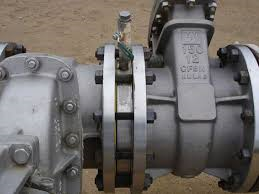Just a general question.
I was discussing the use of bleed rings instead of a spool piece with a former colleague of mine that is now a lead piping designer at another firm, and he had an opinion about them that I would like to discuss with everyone.
The subject of the conversation was how I believed bleed rings would be a cheaper, more economical, easier installation item for bleeding pressure than the use of a flange-pipe-flange spool piece.
His words were, "Don't look at things like that to save money because it does not even come close to being pennies on the dollar of a TIC. Things like that end up costing way more all the way down the line because it's things that people spend time planning and things like that because it's out the norm. Stay with-in the norm. Besides that, they are pieces of shit and should not be used. If you spend a lot of time and energy trying to save a weld then you are not really accomplishing anything."
I am just curious if that is a common opinion of bleed rings. Last thing I want is to try to incorporate them if they aren't a reliable component to use.
Thanks,
DGrayPPD
I was discussing the use of bleed rings instead of a spool piece with a former colleague of mine that is now a lead piping designer at another firm, and he had an opinion about them that I would like to discuss with everyone.
The subject of the conversation was how I believed bleed rings would be a cheaper, more economical, easier installation item for bleeding pressure than the use of a flange-pipe-flange spool piece.
His words were, "Don't look at things like that to save money because it does not even come close to being pennies on the dollar of a TIC. Things like that end up costing way more all the way down the line because it's things that people spend time planning and things like that because it's out the norm. Stay with-in the norm. Besides that, they are pieces of shit and should not be used. If you spend a lot of time and energy trying to save a weld then you are not really accomplishing anything."
I am just curious if that is a common opinion of bleed rings. Last thing I want is to try to incorporate them if they aren't a reliable component to use.
Thanks,
DGrayPPD

